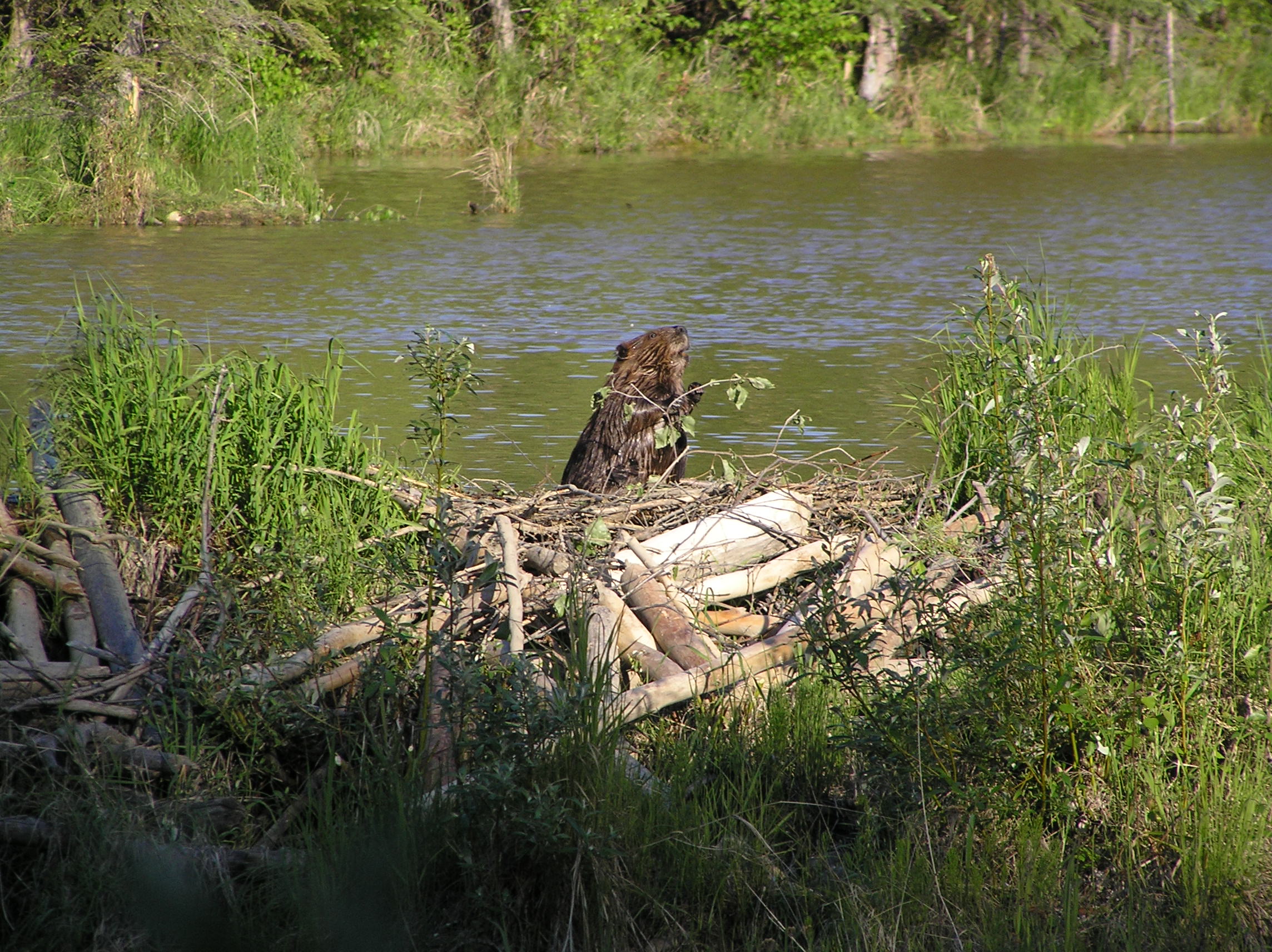Living with Beavers
Beavers are known for their ability to directly shape the landscape. They dam waterways to create ponds for swimming, foraging, lodging, and protection against predators. These dams also create habitat for other wildlife, including juvenile salmon that can use these spaces to forage and hide from predators.
Beavers and their habitat also have the potential to play an important role in climate resilience. As our rainy season becomes dominated by more intense storms, beaver ponds can help store water from heavy rains and reduce flood impacts. As the water in these ponds filters down, it helps recharge groundwater too. This increase in water storage can also help keep streams running that might otherwise go dry in the summer.
While beavers benefit the ecosystem as a whole, there can still be complications that come with these industrious little neighbors. Snohomish Conservation District can help landowners manage their property in ways that allow both beavers and humans to live together.
If beaver activity is causing issues on your property in Snohomish County or on Camano Island, contact us to assess the possibility of a management option that will reduce conflict and allow beavers to remain on-site.
We can help you:
assess your beaver situation and identify management options
develop a beaver management plan
obtain permits for beaver management work
install beaver management devices like exclusion fences for culverts or other structures
install protective tree caging
install native wetland plants along beaver ponds
Management options
Culvert Extension fencing
Exclusion fences: This prevents beavers from accessing certain areas that control water flow, whether its culverts or sections of existing dams.
Tree caging: Like the name suggests, this is protective wiring around a tree or plant that you want to guard from chewing.
Beaver Dam Analogs: These are man-made structures that can be used to attract beavers to certain spots where ponding would not become an issue.
Why can’t I just remove the beaver?
pond leveler
It may be tempting to remove a beaver either through hunting or trapping, but know that the break likely won’t last for long. While relocation via a certified organization is better than lethal control, both relocation and lethal control are temporary solutions. Beavers migrate to empty domains once they mature to adulthood, so if you’ve got a prime spot, you’ll likely see one again soon.
In-place management options, such as pond levelers and exclusion fences, allow beavers to remain on-site and continue to provide valuable benefits to the landscape. When they are properly installed and maintained, non-lethal management devices are often the most cost-effective and sustainable management option available.
What are the benefits of beavers?
We encourage co-existing with beavers whenever possible because of the tremendous benefits they provide to fish, wildlife, and people. These benefits include:
slowing and storing flood waters, recharging groundwater supplies, decreasing the severity of downstream flooding in the winter, and increasing stream flows in the summer
providing critical habitat for juvenile salmon to forage and stay safe from predators
capturing excess sediment from the water column by slowing the water down and allowing it to settle to the bottom of the pond
providing wetland habitat for many kinds of birds and wildlife such as herons, ducks, deer, and frogs
improving climate resilience for an area that could otherwise succumb to drought, flash flooding, or severe wildfire.
Articles
Everett Herald - May 9, 2017 - "Troublesome dams in Mill Creek fixed by the ‘beaver deceiver’"











